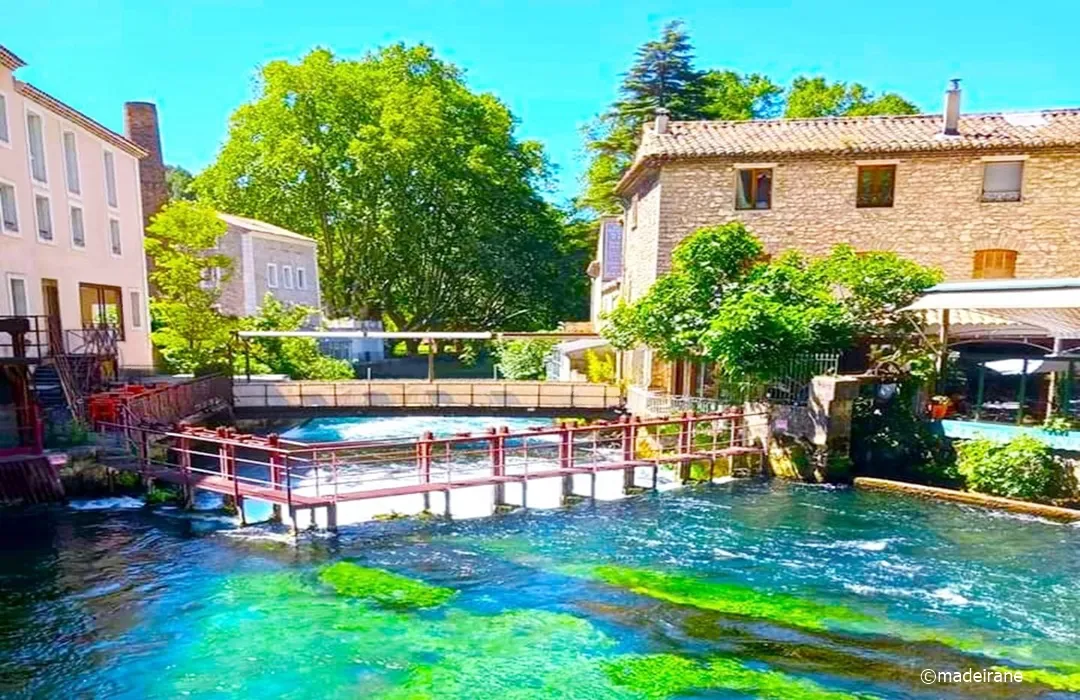
Fontaine de Vaucluse is especially popular during the period of active snowmelt, when you sit in a café drinking hot coffee, and below, the river overflows and rages, rushing at high speed, forming waterfalls. In general, to see all the beauty, you should go to this place in March when the snow begins to melt. But in summer, we also had something to see, despite the fact that the river became very small, and the source was hard to see!
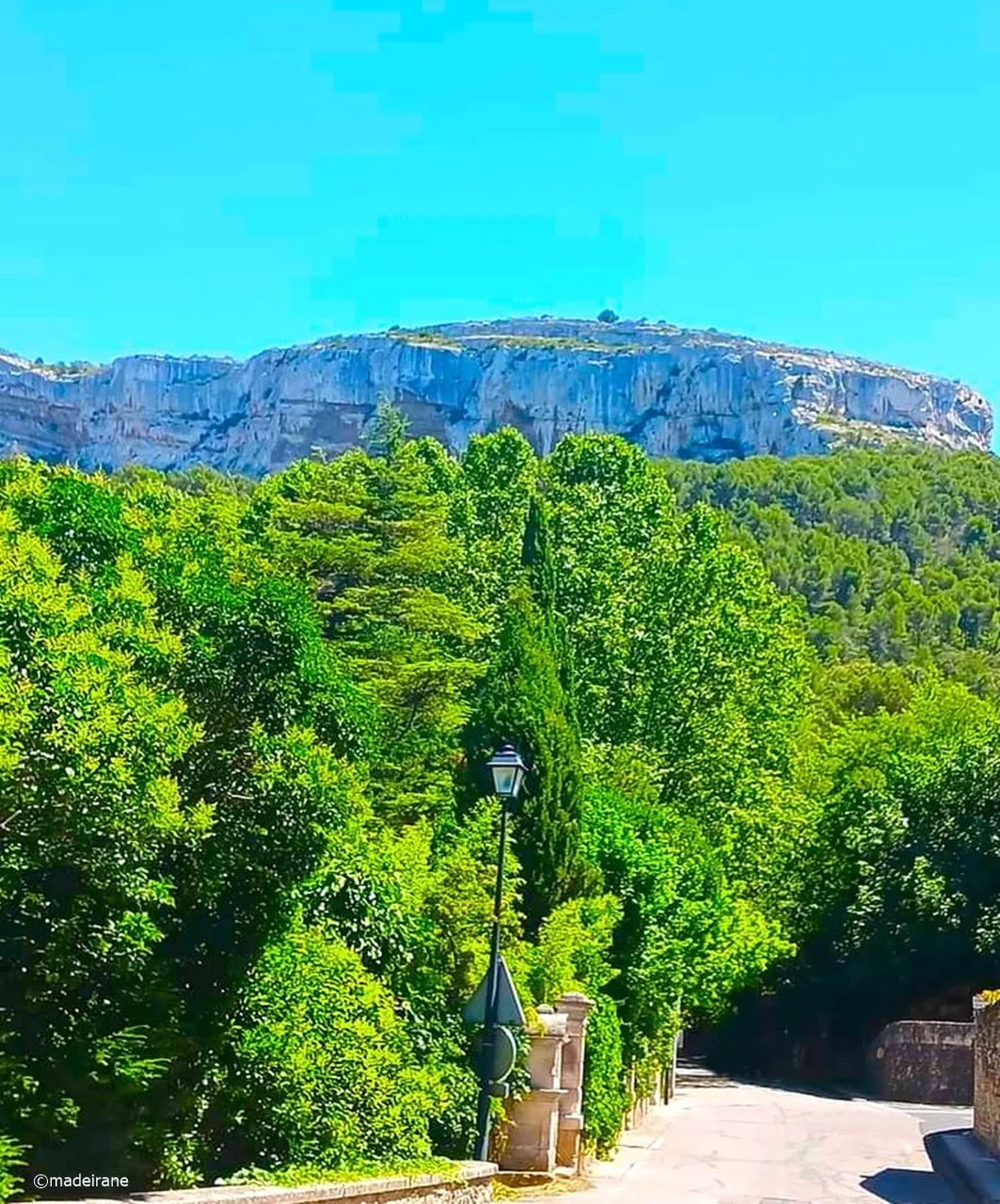
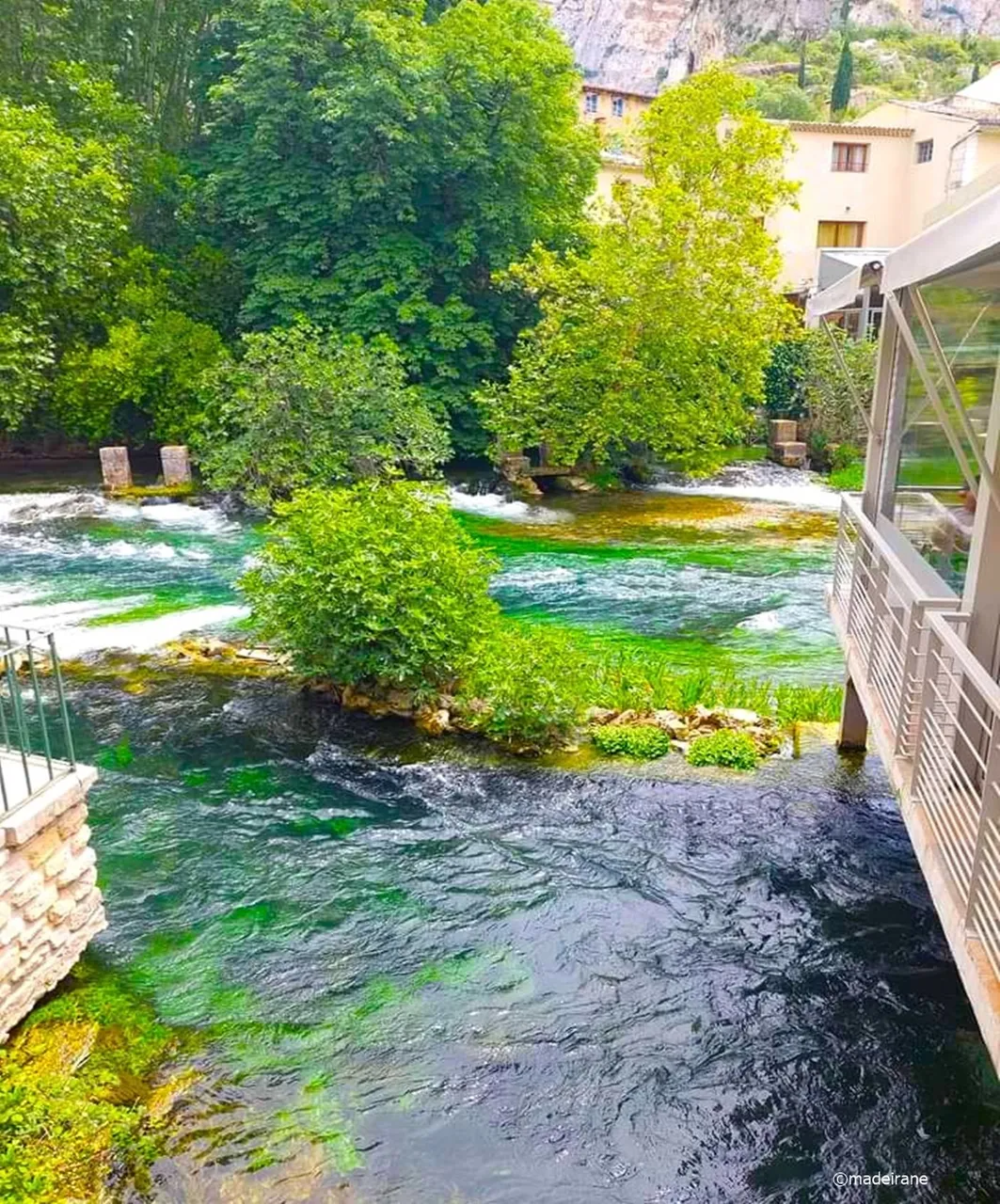
That day we visited the town of Fontaine de Vaucluse and Ile Sort la Sorgue. A visit to these places was planned long before the trip to Provence. In many tourist publications, these places were described as very picturesque and very memorable. And the Fontaine de Vaucluse is also famous for the fact that the famous karst spring of the Sorgue River is located here. The spring is the largest reserve of fresh water in France.


And so, early in the morning, we got into the car and went to see those famous places in Provence. The distance from the guest house in Graveson, where we spent the night, to Fontaine de Vaucluse is about 30 km and driving along the roads of France is a pleasure. Apple orchards along the road, and mountains and mountains on the horizon.

On Sundays, free parking in the town is not so easy to find, but there is a fairly large paid parking lot here. The parking attendant slowly approached us and gave us a receipt. The weather was perfect, I would say, even too hot. We began exploring the town.
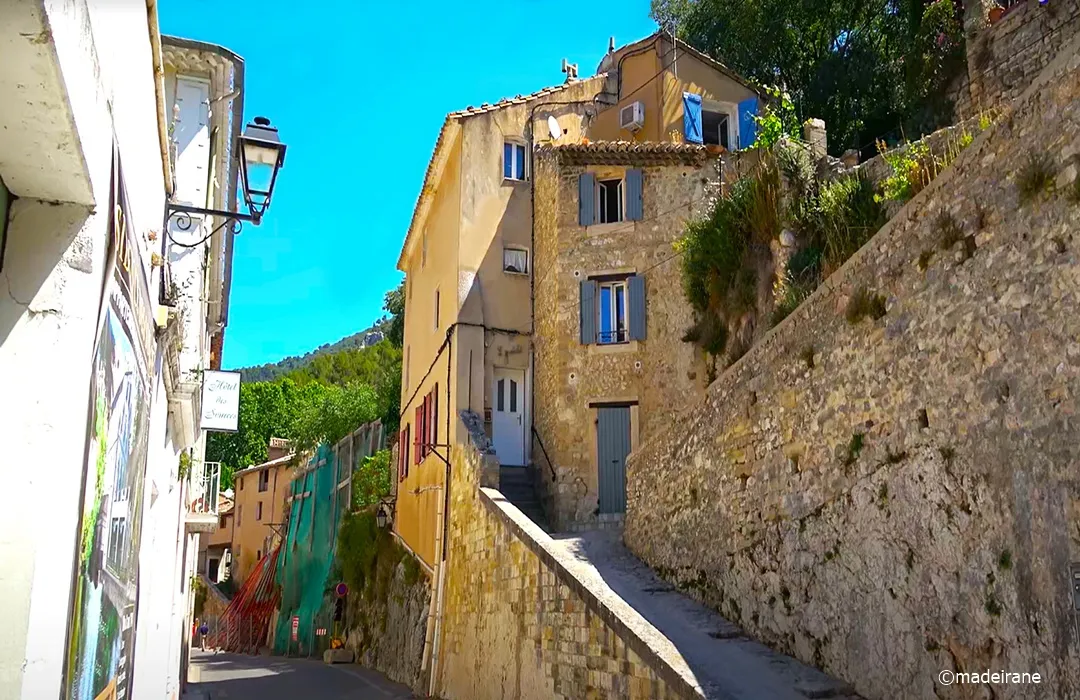
The Fontaine de Vaucluse is located at the foot of the Vaucluse mountain, in a valley. There are huge rocks around and a river flows. The town is truly located in a very picturesque place. The village itself looks very colorful; neat houses, attractive cafés, against the backdrop of a turbulent stream of water, all this creates quite a strong impression.

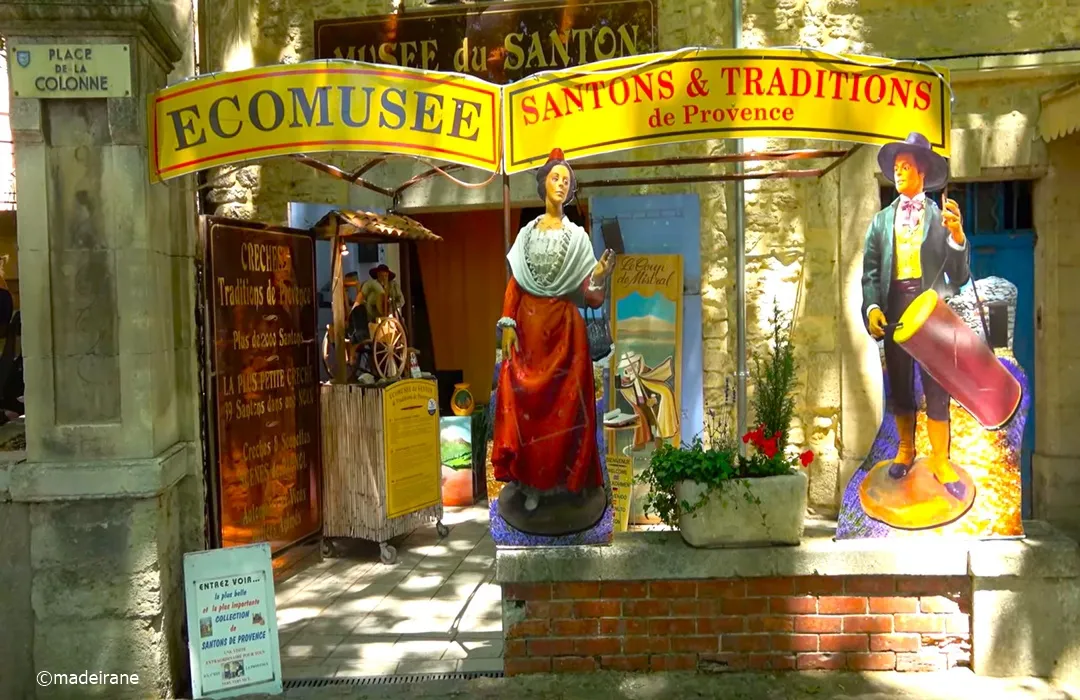
Our main goal was to get to the source of the Sorg River. For this, we needed to go up along the left side of the river.
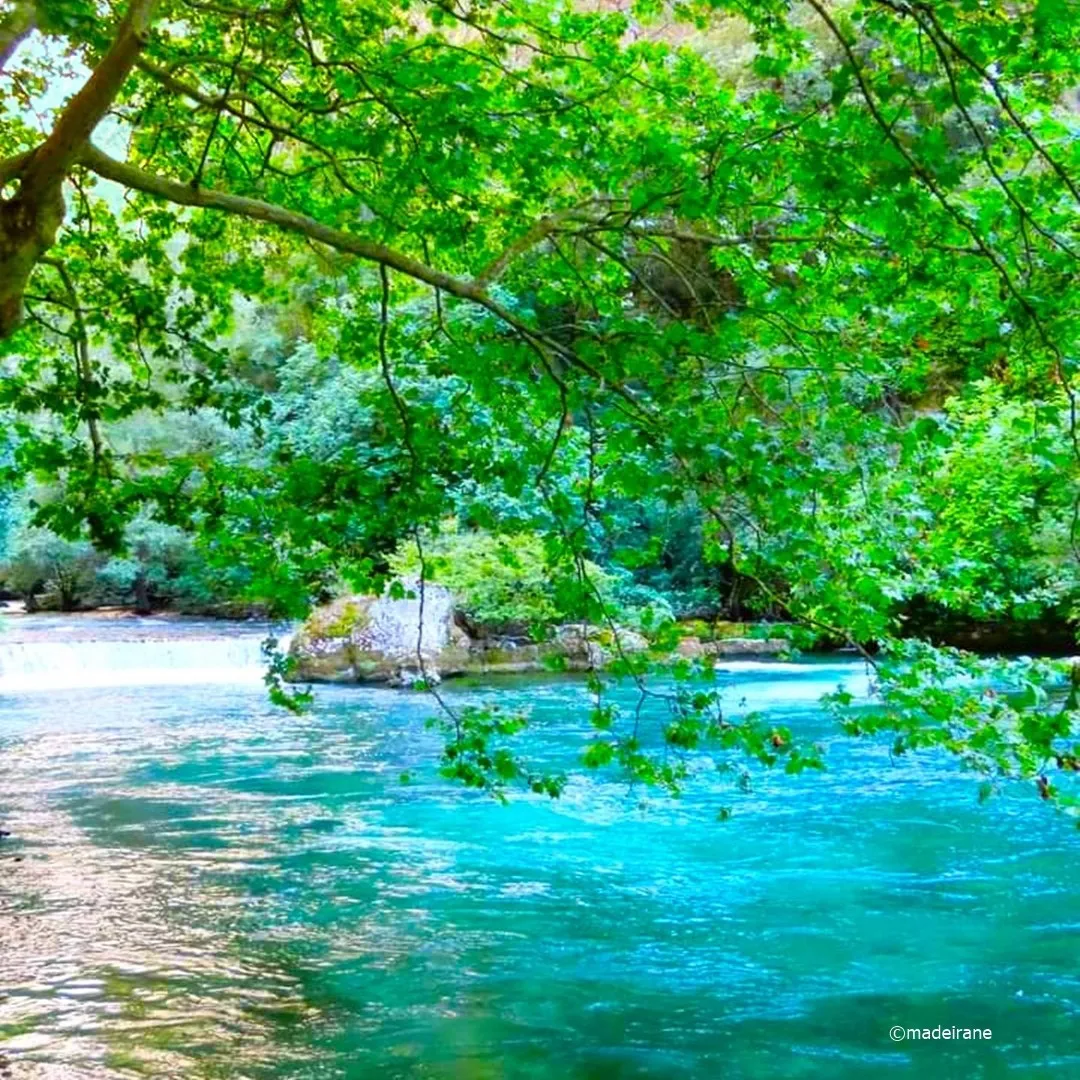
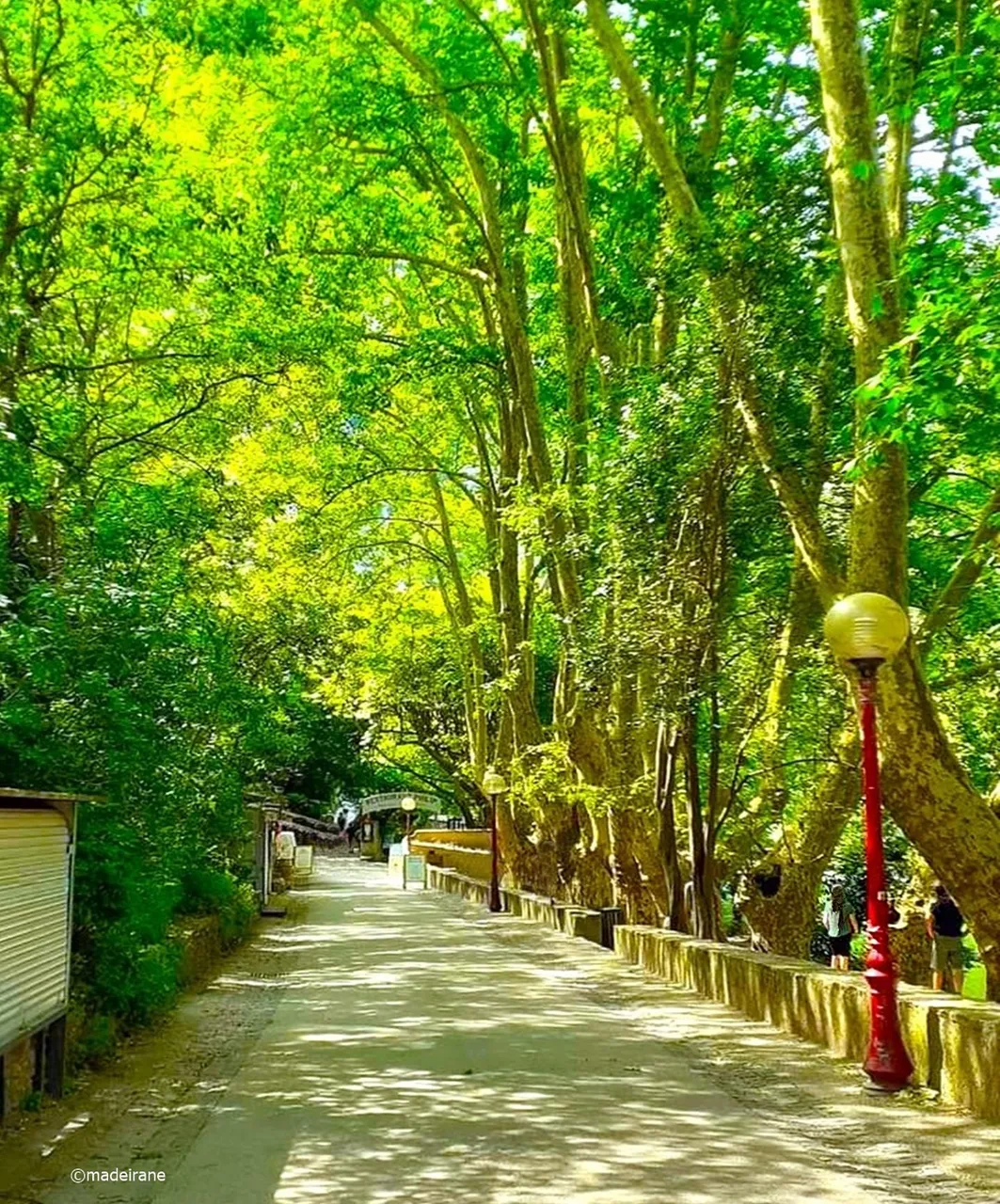
The Sorg River - clear emerald water with bright green algae. On the river, almost at the very beginning of the route, there is a mill wheel overgrown with moss.
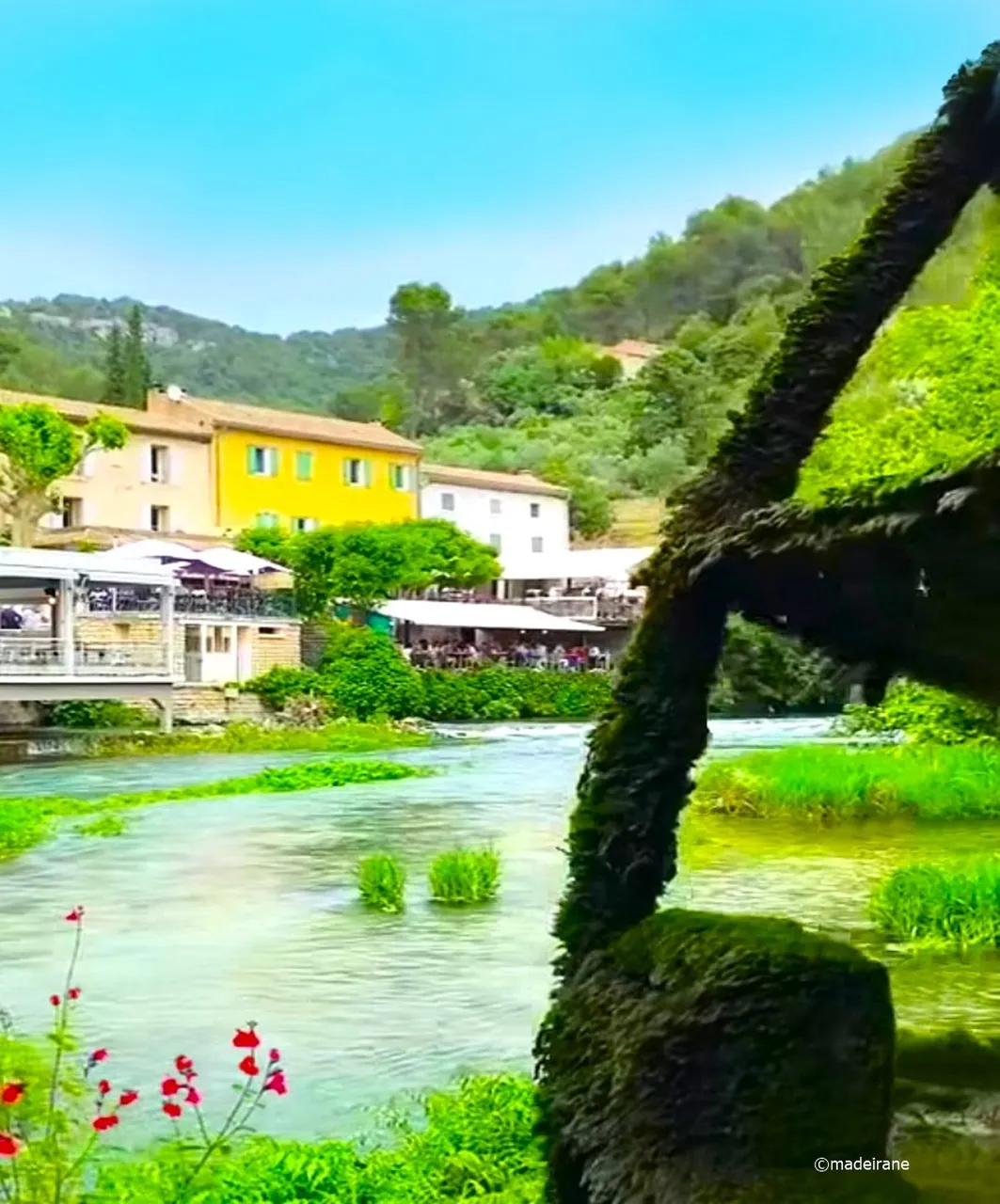
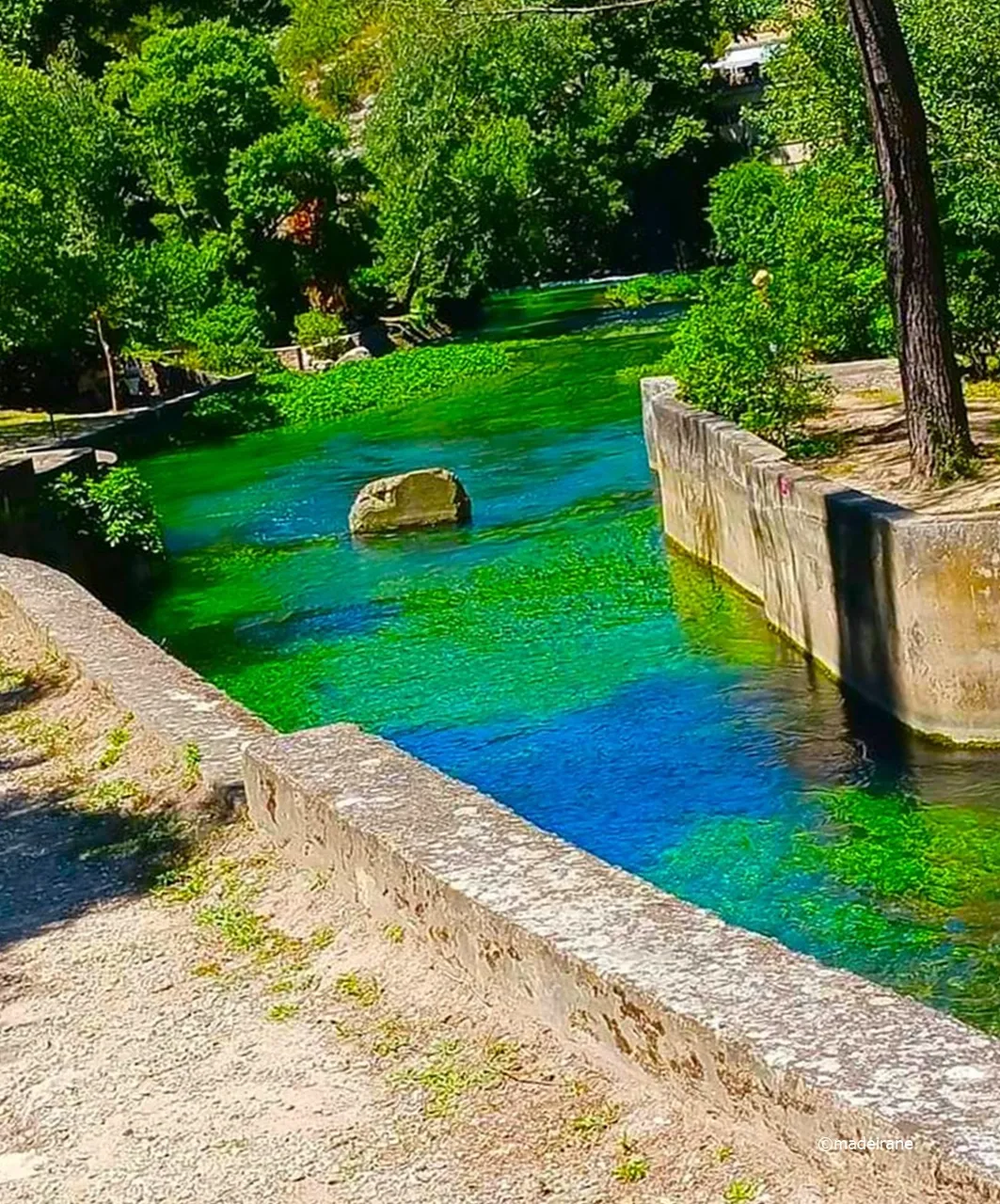
Somewhere in the middle of the path there is another very large working water mill with wheels, spectacularly overgrown with moss. Be sure to look at that old water mill. There is the unique Le Moulin Papier factory in a working mill from the 15th century, where paper is still made by hand. Admission to the factory and the museum is free, where you can observe the paper making process and buy different types of paper, books and souvenirs. Never before have we seen such a unique factory.
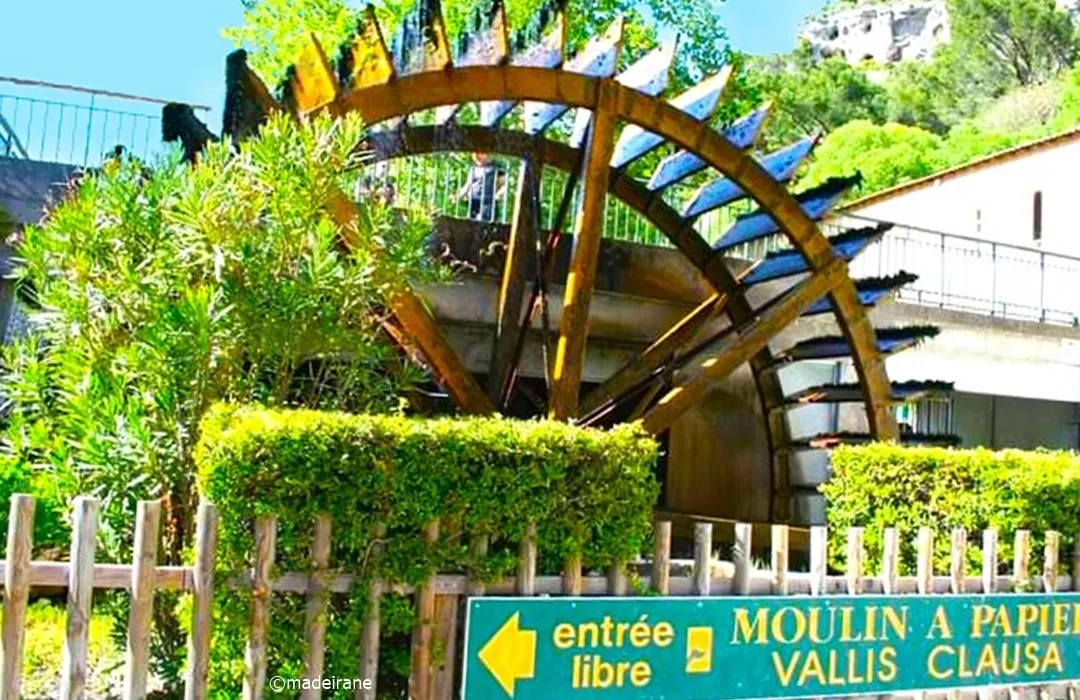
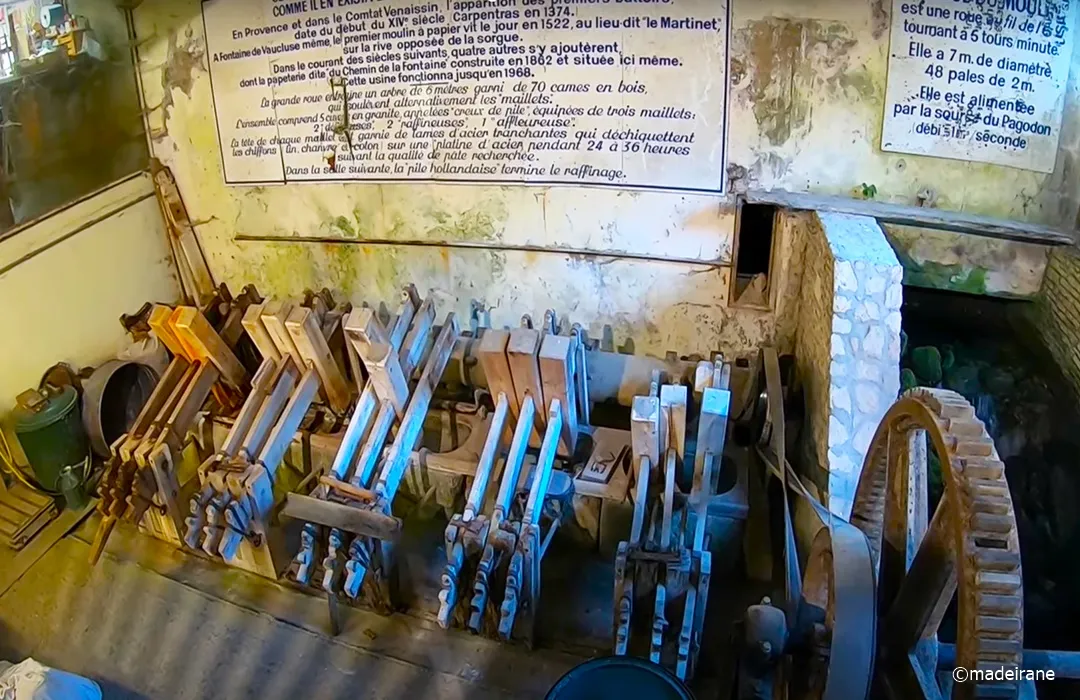

Further, we continued the path to the source. We tried to move exclusively in the shade, since it was very hot in the sun. The beauty around is indescribable, you want to stop every few meters and capture the surroundings.
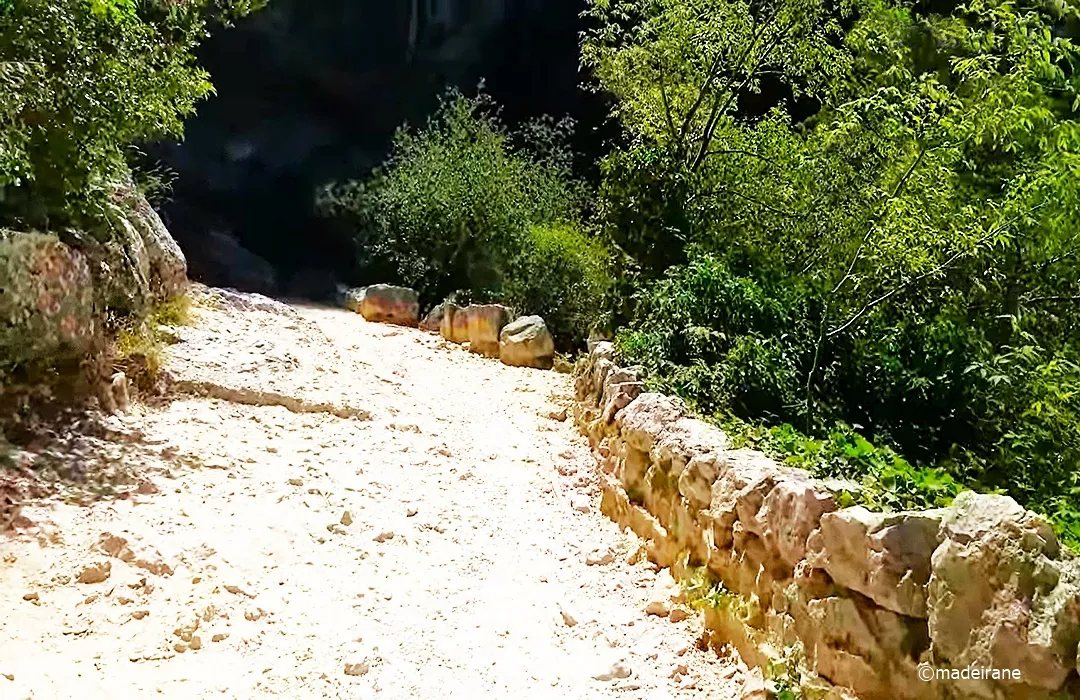

There are restaurants, cafes and souvenir shops on the shore. The Sorg River flows nearby, sometimes calm, sometimes stormy due to the rapids in the river. It's a heavenly place. Green algae stretched along the flow of the river.
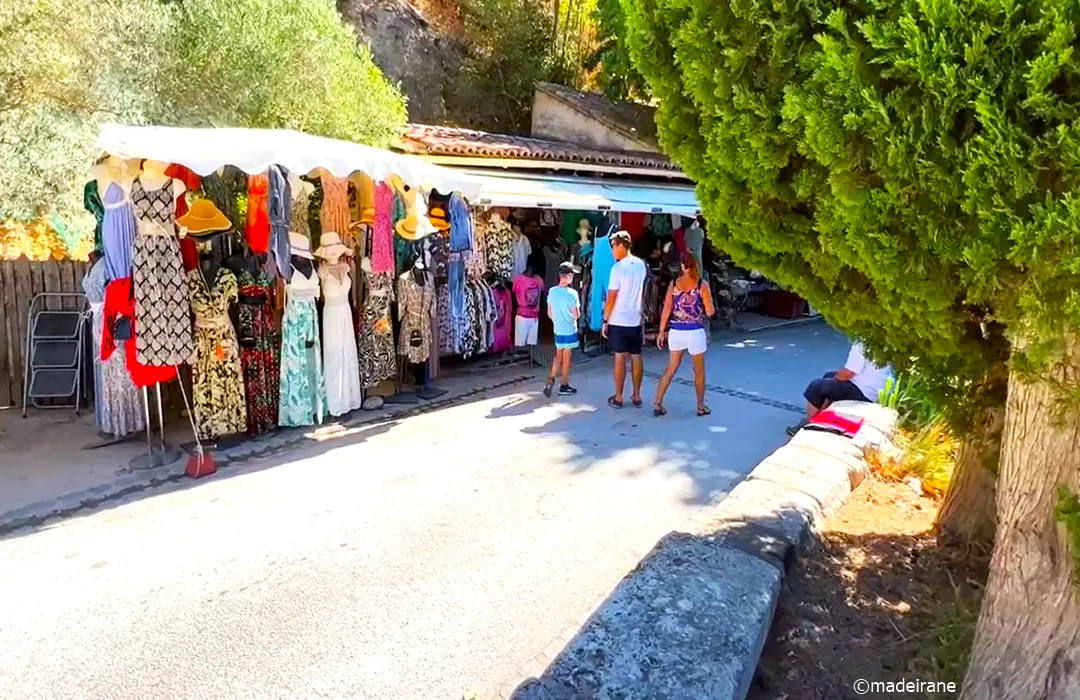

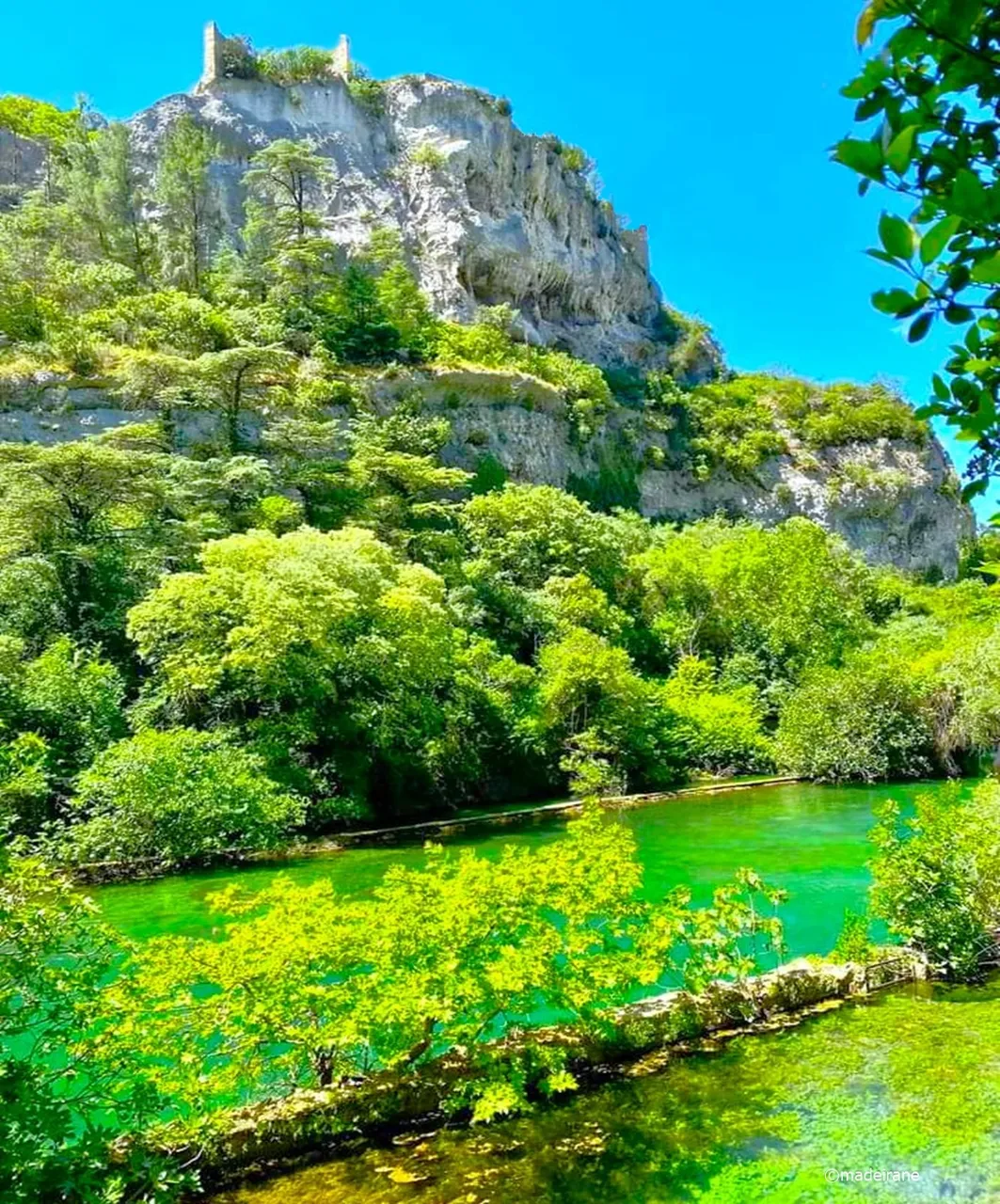
Moss-grown stones try to block the water pressure, but the river current is strong.
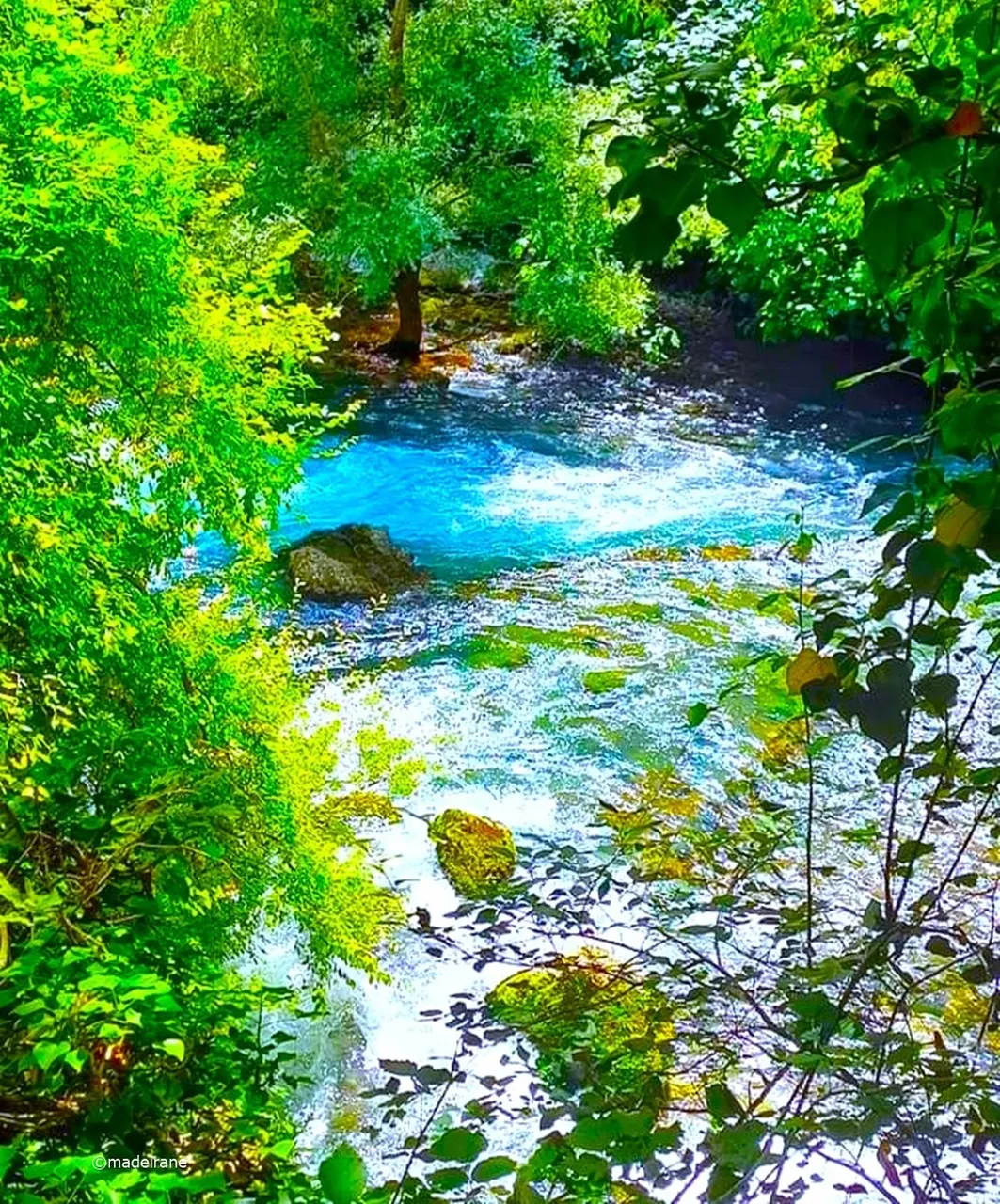
We move on, the climb to the source is gentle, about 200 meters, no fatigue, only enthusiastic exclamations. Near the spring is an information board adescribing the history of this area.
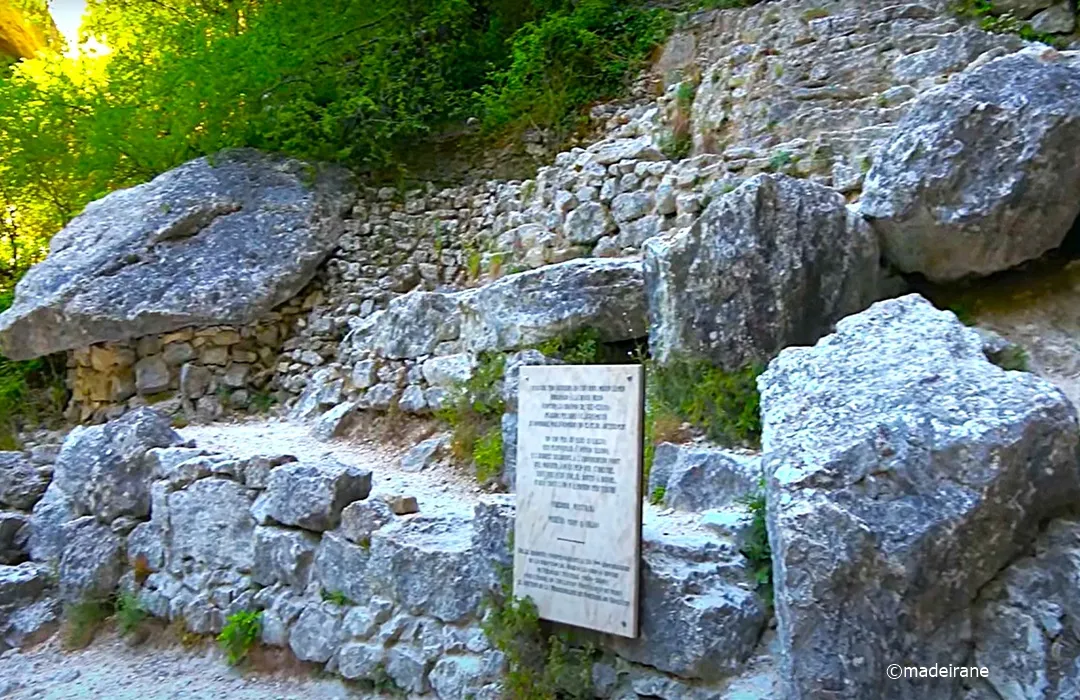
There is a rather large hole in the huge rock, in the depths of which there is a spring and a lake. The black hole seems bottomless. An underground lake emerges from the ground through the so-called Fontaine depression, with an area of 1200 square meters. Data says, the depth of the grotto is estimated at 90 meters. When the water output reaches 22 cubic meters per second, the water becomes greener than usual. The water quickly overflows the edge of the natural bowl and rushes rapidly into the river.
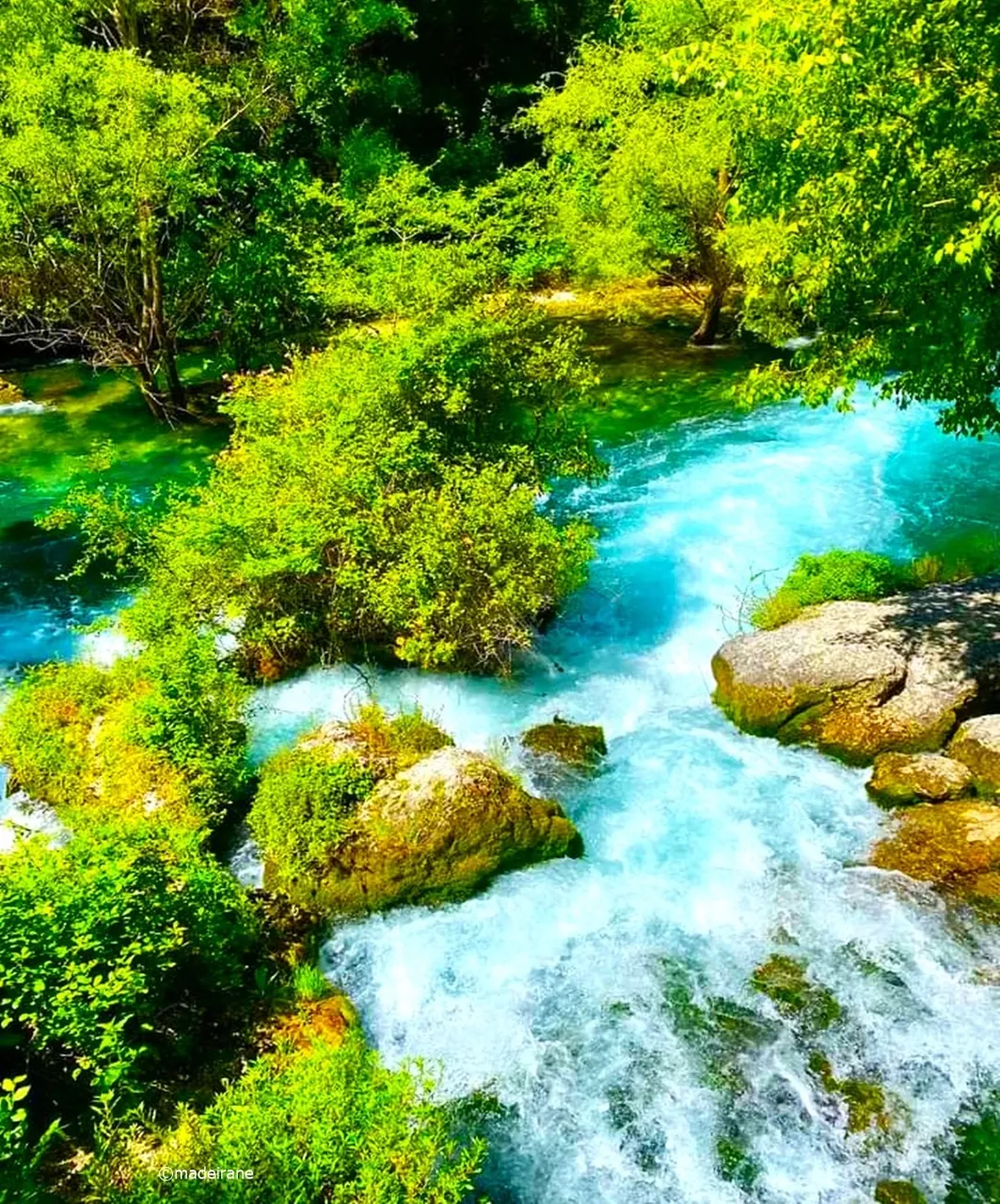
In spring, the water level in the lake rises, and a fountain is formed, which throws out a powerful stream of water. Here is the source.
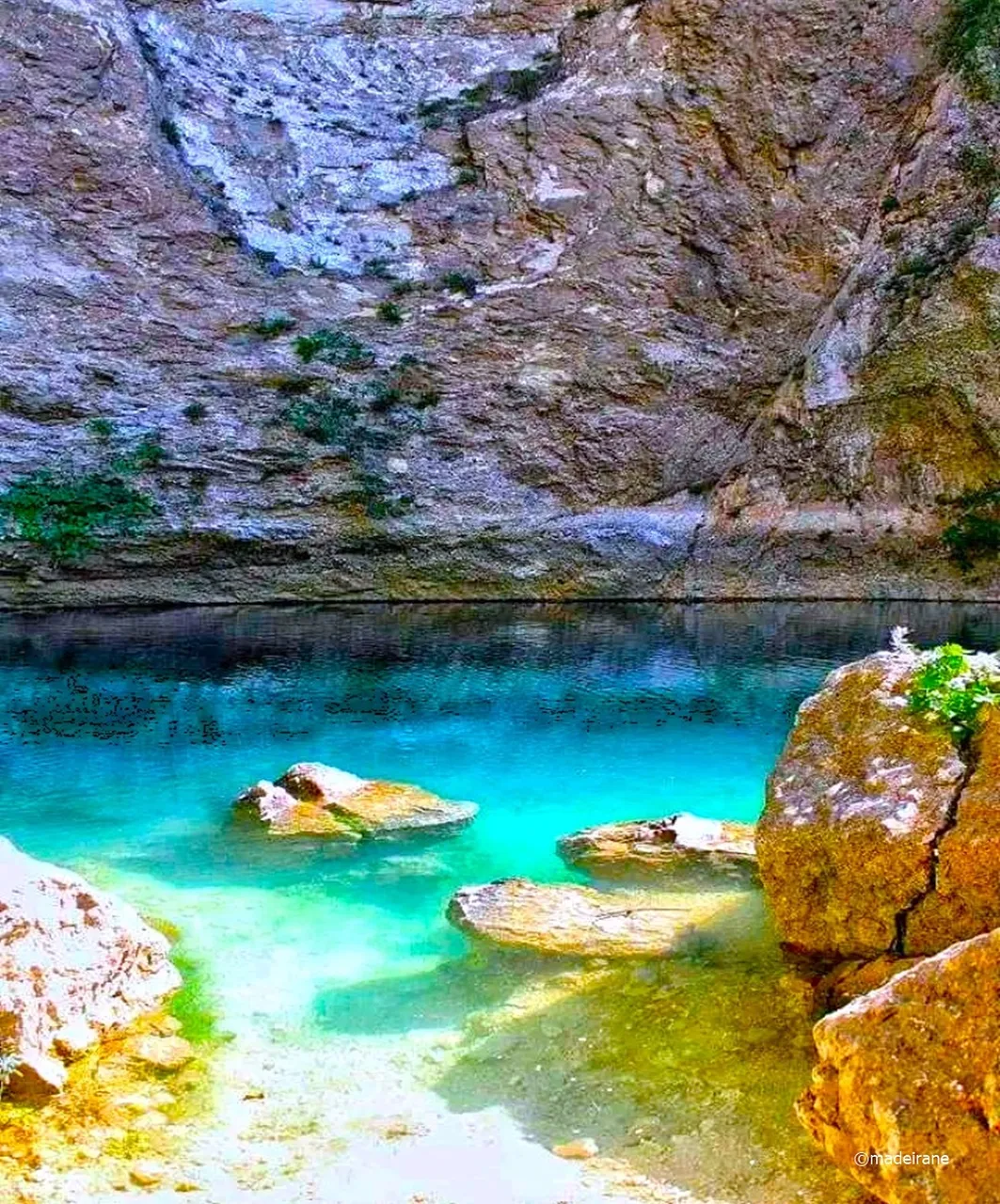
What remains unexplained is the fact, what is the reason for such an extreme release of water from the grotto? The matter definitely has nothing to do with the time of year and the amount of precipitation. Most likely, it has to do with the terrain, which is surrounded by three massifs - Ventoux, Luberon and Lure.
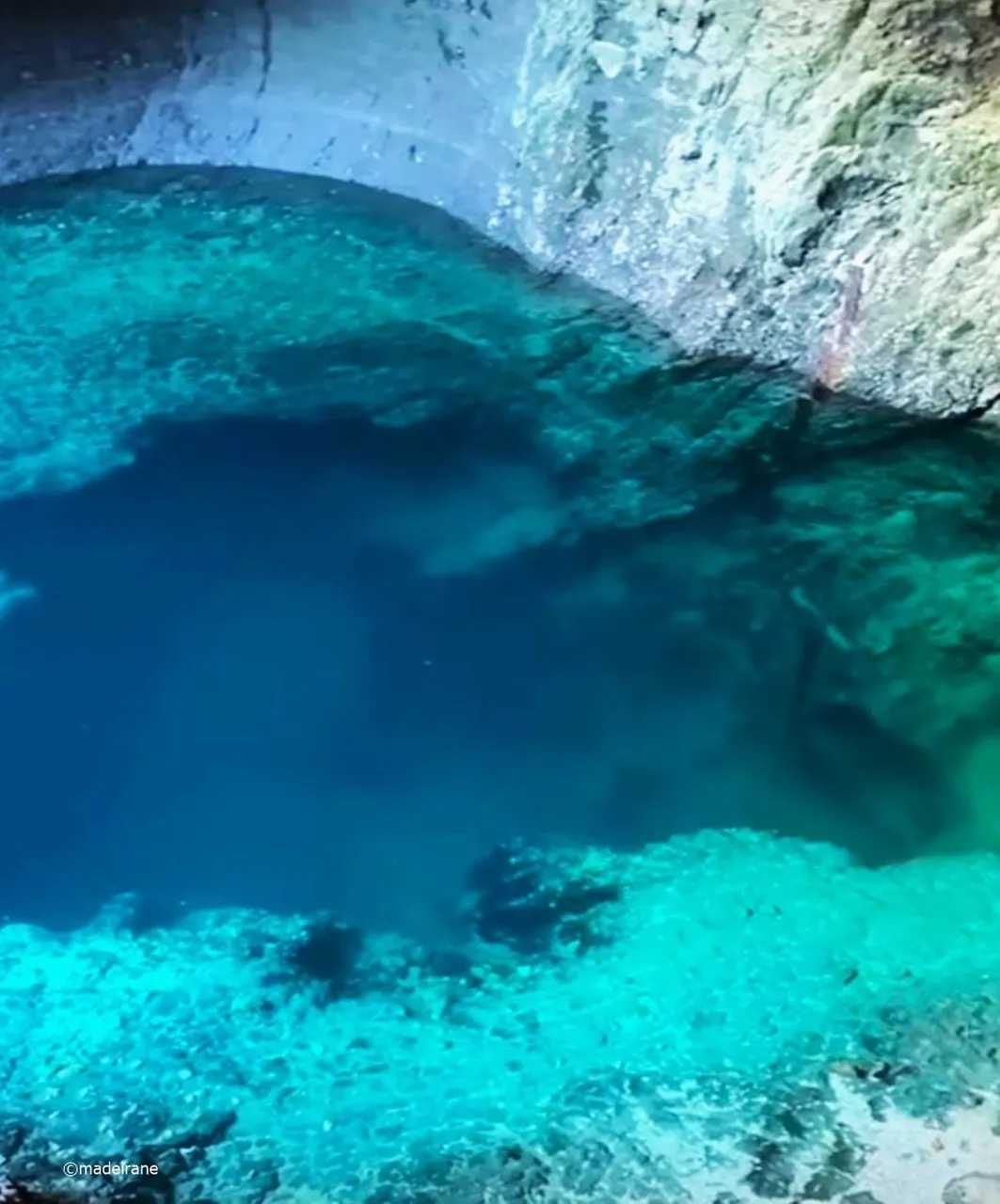
The place at the source itself is very beautiful and fascinating. There are huge rocks around and a gaping bottomless void in the rock.

After admiring the local beauty, we set off on the way back; periodically we came across points where travelers, exhausted by the heat, took a break in the shade of trees. Probably at that moment, the desire to take a plunge was the strongest among most vacationers, but the water was very cold, and the stream was quite stormy.

The leisurely journey there and back took about 2 hours. The desire to eat something comes. Delicious food in a restaurant on the river bank in the fresh air.
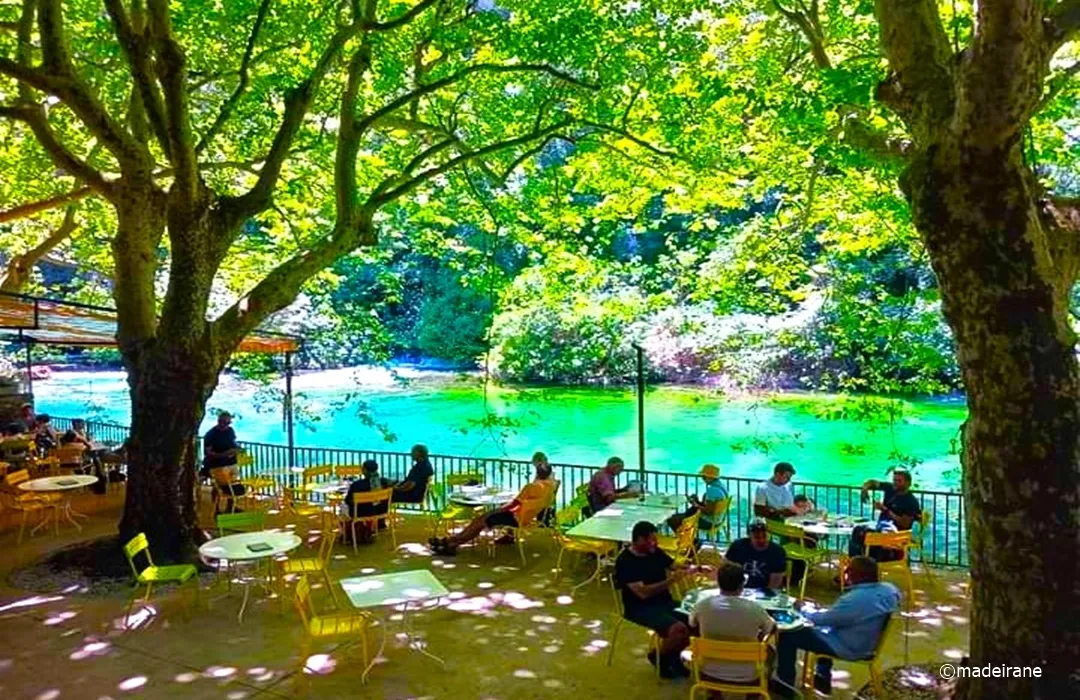
Returning to the village, you can climb to the ruins of the archbishop's castle, from where they say a beautiful panorama of the village and its surroundings opens. We didn’t do that, because we were already exhausted enough to go somewhere else.
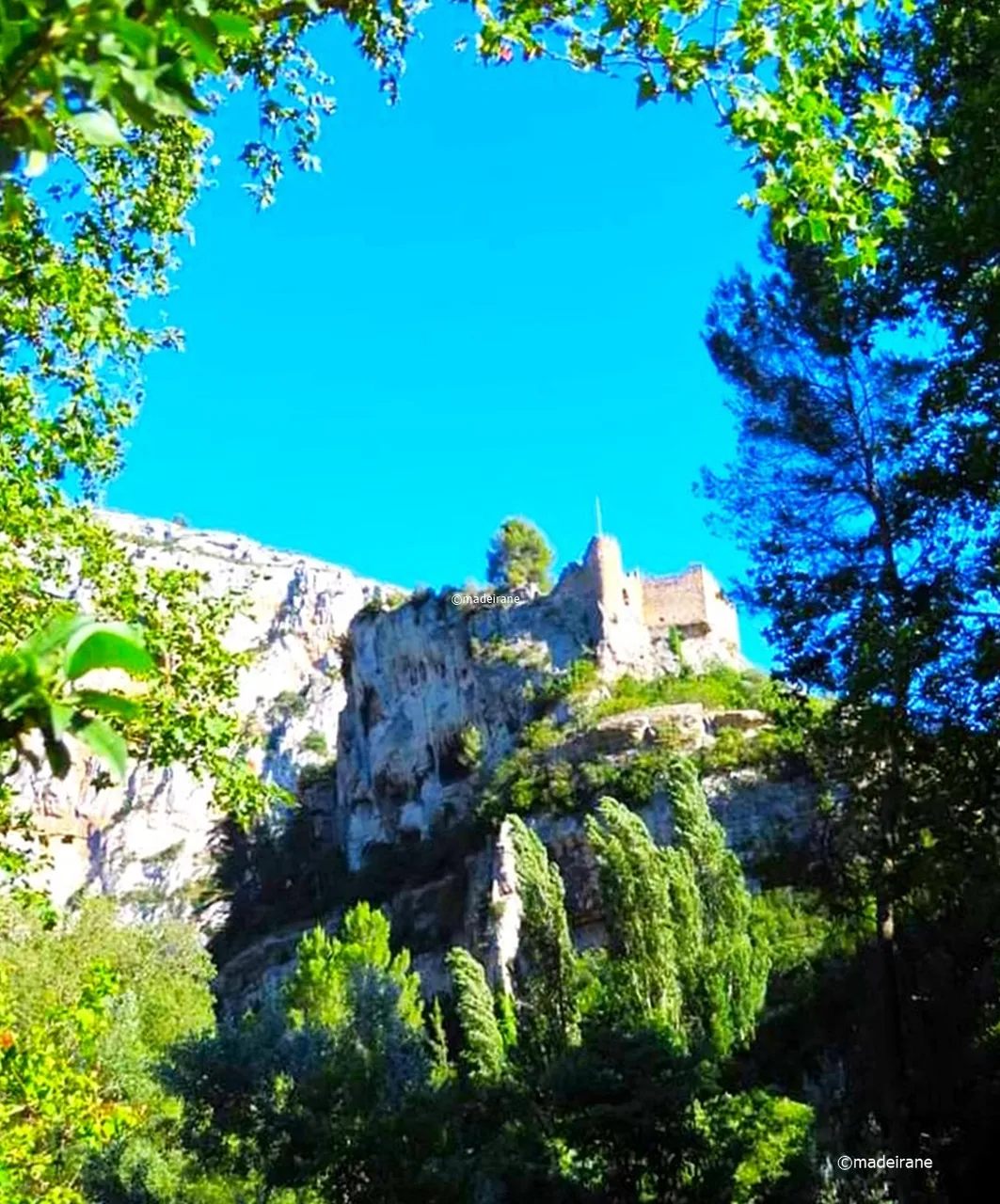
A few words about the town. It has been a Roman settlement since prehistoric times. It has its patron, Bishop Cavaillon, who lived here as a hermit around 515. There is a legend that Cavaillon performed a miracle here, ridding the Sorg River from a terrible dragon.

Most of the attractions of Fontaine de Vaucluse are located around the main square. The column decorating the square was erected in honor of the 500th anniversary of Francesco Petrarch. The Church of Our Lady and St. Veran dates back to the 11th century.
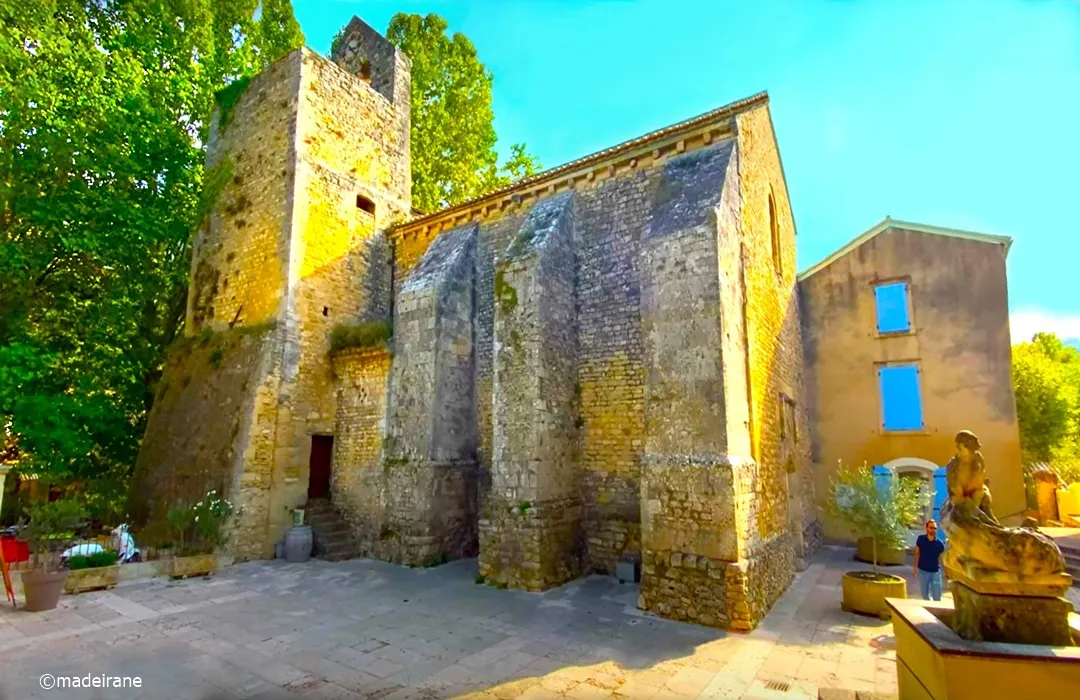
In addition to visiting the source, this place may also be of interest to poetry lovers; it was in this village that Petrarch lived and wrote sonnets, inspired by the local beauty. The image of the beautiful Laura, sung by him in his works, appeared to the poet in these places. The village has a column in honor of Petrarch and a museum dedicated to the poet.

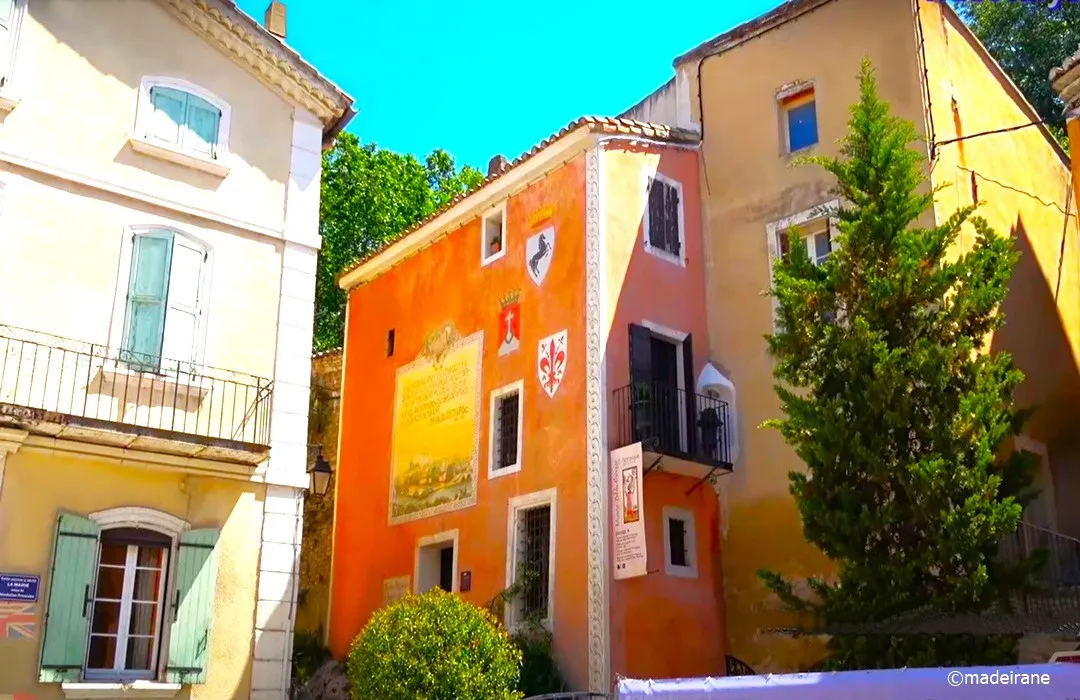
Despite the fact that we did not see the source and fountain in all their glory, there is nothing to regret, because in any case, we received a lot of positive emotions from this trip.

💝💝💝💝💝💝💝💝💝💝
With love, @madeirane
Photos are taken by me.
© 2024
Translated from Lithuanian with DeepL.com (free version).
Fontaine de Vaucluse ypač populiarus aktyvaus sniego tirpsmo laikotarpiu, kai sėdite kavinėje ir geriate karštą kavą, o apačioje upė išsilieja ir šėlsta, šniokšdama dideliu greičiu ir sudarydama krioklius. Apskritai, norėdami pamatyti visą grožį, į šią vietą turėtumėte vykti kovo mėnesį, kai pradeda tirpti sniegas. Tačiau vasarą taip pat buvo ką pamatyti, nepaisant to, kad upė pasidarė labai maža, o jos ištakas sunku įžiūrėti!
Tą dieną aplankėme Fontaine de Vaucluse miestelį ir Ile Sort la Sorgue. Apsilankymas šiose vietose buvo suplanuotas dar gerokai prieš kelionę į Provansą. Daugelyje turistinių leidinių šios vietos buvo aprašytos kaip labai vaizdingos ir įsimintinos. O Fontaine de Vaucluse garsėja dar ir tuo, kad čia yra garsusis karstinis Sorgue upės šaltinis. Šis šaltinis yra didžiausias gėlo vandens telkinys Prancūzijoje.
Taigi anksti ryte sėdome į automobilį ir išvykome apžiūrėti šių garsių Provanso vietų. Nuo Gravesono svečių namų, kuriuose nakvojome, iki Fontaine de Vaucluse yra apie 30 km, o važiuoti Prancūzijos keliais - vienas malonumas. Palei kelią - obelų sodai, o horizonte - kalnai ir kalnai.
Sekmadieniais nemokamą automobilių stovėjimo aikštelę miestelyje rasti ne taip paprasta, tačiau čia yra gana didelė mokama stovėjimo aikštelė. Stovėjimo aikštelės prižiūrėtojas lėtai priėjo prie mūsų ir išdavė kvitą. Oras buvo puikus, sakyčiau, net per karštas. Pradėjome tyrinėti miestelį.
Fontaine de Vaucluse įsikūręs Voklizo kalno papėdėje, slėnyje. Aplink yra didžiulių uolų ir teka upė. Miestelis išties įsikūręs labai vaizdingoje vietoje. Pats miestelis atrodo labai spalvingai; tvarkingi namai, patrauklios kavinės, audringos vandens srovės fone - visa tai sukuria gana stiprų įspūdį.
Pagrindinis mūsų tikslas buvo patekti prie Sorgo upės ištakų. Tam mums reikėjo pakilti palei kairįjį upės krantą.
Sorgo upė - skaidrus smaragdinis vanduo su ryškiai žaliais dumbliais. Prie upės, beveik pačioje maršruto pradžioje, stovi samanomis apaugęs malūno ratas.
Kažkur tako viduryje yra dar vienas labai didelis veikiantis vandens malūnas su ratais, įspūdingai apaugęs samanomis. Būtinai apžiūrėkite tą seną vandens malūną. XV a. veikiančiame malūne yra unikalus Le Moulin Papier fabrikas, kuriame iki šiol rankomis gaminamas popierius. Įėjimas į fabriką ir muziejų nemokamas, čia galite stebėti popieriaus gamybos procesą ir įsigyti įvairių rūšių popieriaus, knygų ir suvenyrų. Tokio unikalaus fabriko dar niekada nebuvome matę.
Toliau tęsėme kelią prie šaltinio. Stengėmės judėti tik pavėsyje, nes saulėje buvo labai karšta. Aplink esantis grožis nenusakomas, norisi kas kelis metrus sustoti ir įamžinti aplinką.
Pakrantėje yra restoranų, kavinių ir suvenyrų parduotuvių.
Netoliese teka Sorgo upė, kartais rami, o kartais audringa dėl upės slenksčių. Tai dangiška vieta. Palei upės tėkmę išsidėstę žali dumbliai.
Samanomis apaugę akmenys bando blokuoti vandens slėgį, tačiau upės srovė stipri.
Judame toliau, kopimas iki ištakų švelnus, apie 200 metrų, jokio nuovargio, tik entuziastingi šūksniai. Netoli šaltinio stovi informacinis stendas, kuriame aprašoma šios vietovės istorija.
Didžiulėje uoloje yra gana didelė skylė, kurios gelmėse trykšta šaltinis ir ežeras. Juodoji skylė atrodo be dugno. Požeminis ežeras iškyla iš žemės per vadinamąją Fontaine įdubą, kurios plotas 1200 kvadratinių metrų. Duomenys byloja, kad grotos gylis siekia 90 metrų. Kai vandens išeiga pasiekia 22 kubinius metrus per sekundę, vanduo tampa žalesnis nei įprastai. Vanduo greitai perlieja natūralaus duburio kraštą ir sparčiai veržiasi į upę.
Pavasarį vandens lygis ežere pakyla, susidaro fontanas, kuris išmeta galingą vandens srovę. Čia yra šaltinis.
Lieka neišaiškintas faktas, kas lemia tokį ekstremalų vandens išsiveržimą iš grotos? Šis klausimas tikrai nesusijęs su metų laiku ir kritulių kiekiu. Greičiausiai tai susiję su vietove, kurią supa trys masyvai - Ventoux, Luberon ir Lure.
Pati šaltinio vieta yra labai graži ir įspūdinga. Aplink yra didžiulės uolos, o uoloje žiojėja bedugnė tuštuma.
Pasigrožėję vietos grožiu, leidomės atgal; periodiškai pasitaikydavo vietų, kur karščio išvarginti keliautojai atsikvėpdavo medžių pavėsyje. Tikriausiai tuo metu daugumai poilsiautojų labiausiai kilo noras pasinerti į vandenį, tačiau vanduo buvo labai šaltas, o upelis gana audringas.
Neskubri kelionė ten ir atgal truko apie 2 valandas. Kilo noras ką nors suvalgyti. Skanus maistas restorane ant upės kranto gryname ore.
Grįžtant į kaimą galima užlipti į arkivyskupo pilies griuvėsius, nuo kurių, kaip sakoma, atsiveria graži kaimo ir apylinkių panorama. Mes to nedarėme, nes jau buvome pakankamai išvargę, kad eitume kur nors kitur.
Keletas žodžių apie miestelį. Tai buvo romėnų gyvenvietė nuo priešistorinių laikų. Jis turi savo globėją - vyskupą Kavailjoną, kuris čia gyveno kaip eremitas apie 515 m. Pasakojama legenda, kad Kavailjonas čia padarė stebuklą ir išlaisvino Sorgo upę nuo baisaus drakono.
Dauguma Fontaine de Vaucluse lankytinų vietų yra įsikūrusios aplink pagrindinę aikštę. Aikštę puošianti kolona buvo pastatyta Frančesko Petrarkos 500 metų jubiliejaus proga. Mergelės Marijos ir šventojo Verano bažnyčia pastatyta XI amžiuje.
Ši vieta gali sudominti ne tik šaltinio lankytojus, bet ir poezijos mylėtojus; būtent šiame kaime gyveno Petrarka ir rašė sonetus, įkvėptas vietos grožio. Šiose vietose poetui pasirodė gražuolės Lauros paveikslas, apie kurį jis dainuoja savo kūriniuose. Kaime stovi Petrarkos garbei skirtas stulpas ir poetui skirtas muziejus.
Nepaisant to, kad nematėme šaltinio ir fontano visu jų grožiu, nėra ko gailėtis, nes bet kuriuo atveju iš šios kelionės gavome daug teigiamų emocijų.